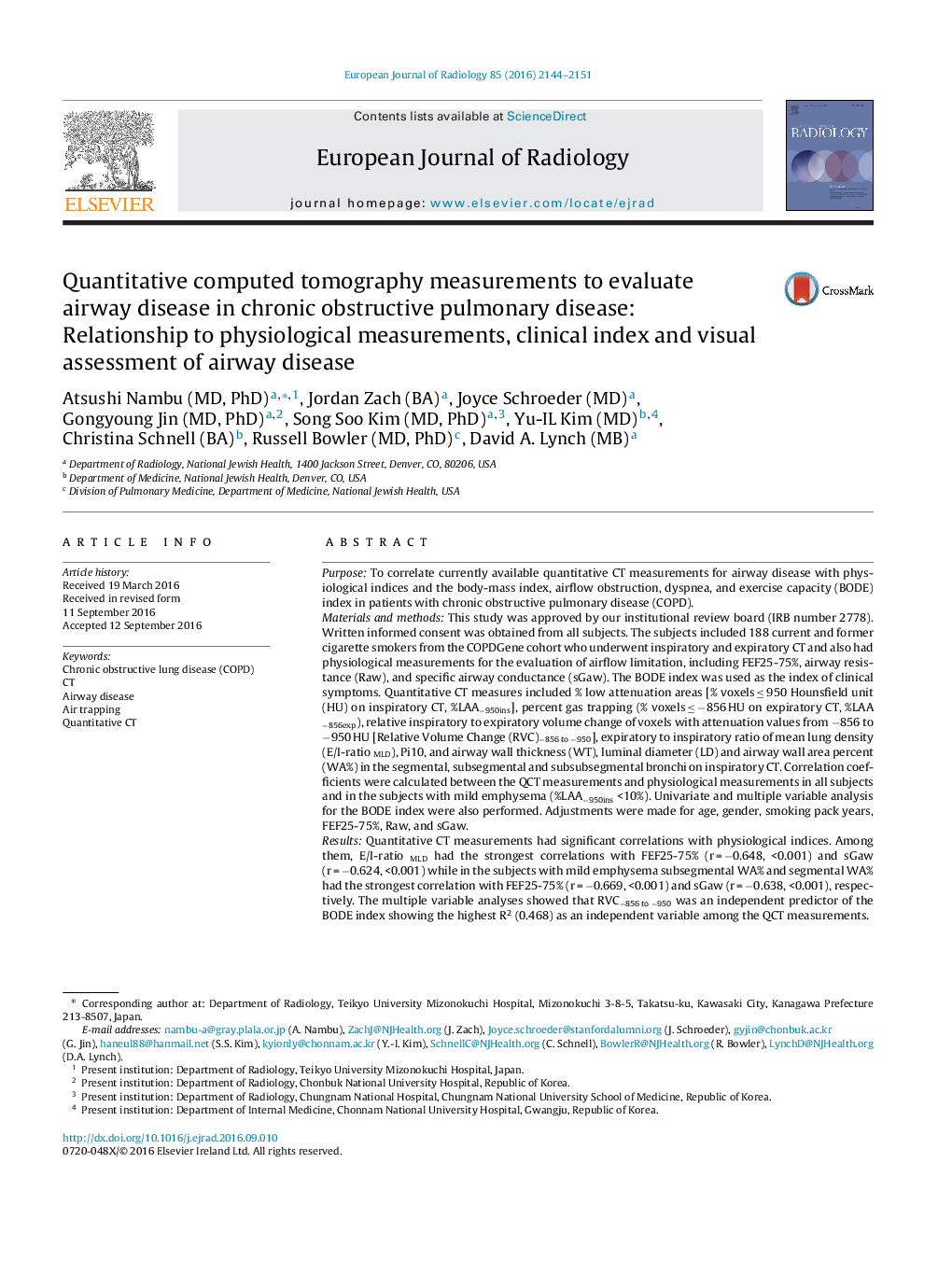| کد مقاله | کد نشریه | سال انتشار | مقاله انگلیسی | نسخه تمام متن |
|---|---|---|---|---|
| 6481968 | 1609736 | 2016 | 8 صفحه PDF | دانلود رایگان |
PurposeTo correlate currently available quantitative CT measurements for airway disease with physiological indices and the body-mass index, airflow obstruction, dyspnea, and exercise capacity (BODE) index in patients with chronic obstructive pulmonary disease (COPD).Materials and methodsThis study was approved by our institutional review board (IRB number 2778). Written informed consent was obtained from all subjects. The subjects included 188 current and former cigarette smokers from the COPDGene cohort who underwent inspiratory and expiratory CT and also had physiological measurements for the evaluation of airflow limitation, including FEF25-75%, airway resistance (Raw), and specific airway conductance (sGaw). The BODE index was used as the index of clinical symptoms. Quantitative CT measures included % low attenuation areas [% voxels â¤Â 950 Hounsfield unit (HU) on inspiratory CT, %LAAâ950ins], percent gas trapping (% voxels â¤Â â856 HU on expiratory CT, %LAA â856exp), relative inspiratory to expiratory volume change of voxels with attenuation values from â856 to â950 HU [Relative Volume Change (RVC)â856 to â950], expiratory to inspiratory ratio of mean lung density (E/I-ratio MLD), Pi10, and airway wall thickness (WT), luminal diameter (LD) and airway wall area percent (WA%) in the segmental, subsegmental and subsubsegmental bronchi on inspiratory CT. Correlation coefficients were calculated between the QCT measurements and physiological measurements in all subjects and in the subjects with mild emphysema (%LAAâ950ins <10%). Univariate and multiple variable analysis for the BODE index were also performed. Adjustments were made for age, gender, smoking pack years, FEF25-75%, Raw, and sGaw.ResultsQuantitative CT measurements had significant correlations with physiological indices. Among them, E/I-ratio MLD had the strongest correlations with FEF25-75% (r = â0.648, <0.001) and sGaw (r = â0.624, <0.001) while in the subjects with mild emphysema subsegmental WA% and segmental WA% had the strongest correlation with FEF25-75% (r = â0.669, <0.001) and sGaw (r = â0.638, <0.001), respectively. The multiple variable analyses showed that RVCâ856 to â950 was an independent predictor of the BODE index showing the highest R2 (0.468) as an independent variable among the QCT measurements.ConclusionQuantitative CT measurements of gas trapping such as E/I-ratio MLD, correlate better with physiological indices for airway disease than those of airway such as WA% or LD. In mild emphysema, however, quantitative CT measurements of airway correlate better with the physiological indices. RVCâ856 to â950 is a predictor of the BODE index.
Journal: European Journal of Radiology - Volume 85, Issue 11, November 2016, Pages 2144-2151
